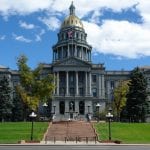State COVID-19 Reopening Guidelines By State
Which States Are Reopening, Which Remain on Lockdown, and Why
Alabama
Governor Kay Ivey ordered all Alabama residents to shelter in place beginning April 4, after repeatedly insisting such an action was not necessary. It did not last long. Ivey later signed an executive order allowing all retail stores to reopen at 50 percent capacity starting April 30.
“We know that what we are announcing today will please some and make others frustrated that we’re not going further at this time, but our job must be always to find the right balance,” Ivey said at a press conference on the reopening plans.
Alaska
Governor Mike Dunleavy relaxed his “Hunker Down” order for the state, which went into effect on March 28. Beginning April 24, restaurants, retail stores, person care services, gyms, law firms, and marketing offices were permitted to reopen, with restrictions. Restaurants and personal care services may serve customers in-house by reservation only, and strict social distancing and disinfection procedures must be in place.
Arizona
Governor Doug Ducey ordered all Arizona residents to shelter in place beginning March 31.
On April 29, Ducey announced he would extend the state’s stay at home order to May 15, with some changes aimed at slowly reopening Arizona’s economy. Retail stores will be permitted to reopen starting May 4, and can expand their operations on May 8, provided they follow strict state guidelines. Ducey said he intends to permit restaurants to open later in the month, though he has not identified a date.
“The objective, while continuing to focus on protecting public health, is going to be turning up the light in our economy,” Ducey said at an April 29 press conference.
Arkansas
While the state never issued a shelter in place order, Governor Asa Hutchinson on March 19 ordered all restaurants and bars to close their dining rooms and operate on a to-go or delivery basis only. A few days later, the Arkansas Department of Health ordered salons, barbershops and tattoo shops to close.
Recently, Hutchinson has moved to reopen most businesses. Restaurants may reopen beginning April 29, and restrictions on gyms and indoor recreational facilities will be lifted April 30. On May 1, beauty salons and barber shops may reopen, and places of worship and larger venues may resume operations starting May 4.
“Even if we do decide to lift restrictions on certain industries after May 4, I want to emphasize that they will remain under Phase One guidelines that call for masks, social distancing, and limits on the size of gatherings,” Hutchinson said in a statement.
California
On March 19, Governor Gavin Newsom ordered all 40 million Californians to shelter in place until further notice. More recently, Newsom has said he plans to reopen the state in phases, beginning sometime in May.
On April 27, the counties of Alameda, Contra Costa, Marin, San Francisco, San Mateo, Santa Clara, and the city of Berkeley announced their stay at home guidelines would be extended through the end of May. But those Bay Area jurisdictions will allow a wider range of outdoor activities, including construction, golf, and child care, beginning May 4.
“We have made substantial progress in slowing the spread of the novel coronavirus,” the joint statement from the counties read. “It is critical that our collective efforts continue so that we do not lose the progress we have achieved together.”
Colorado
Governor Jared Polis issued guidelines allowing some businesses and retail stores to reopen beginning April 27. Under the order, which is in effect until May 26, retail stores can allow customers in-store beginning May 1, so long as they follow social distancing and other health guidelines. Hair salons, massage parlors, and other personal services can open May 1 with 50 percent occupancy, provided both customers and employees wear masks and no more than 10 people are in the establishment at once.
Businesses with offices can allow half of their employees to return to work in-person beginning May 4, so long as they follow strict social distancing and screening guidelines. Colleges and universities may hold classes in-person for learning that cannot be done remotely.
The order does not override municipalities with stricter orders in place, such as Denver, Adams, Jefferson, and Boulder counties, where shelter in place orders have been extended until May 8.
Connecticut
On March 23, Governor Ned Lamont issued a shelter in place order for all 3.5 million Connecticut residents. The order is in effect until May 20, but likely will be extended, with a full reopening staggered across coming months.
Delaware
Governor John Carney ordered all Delaware residents to shelter in place beginning March 24. The order will be in effect till May 15 or “until the public health threat is eliminated,” the governor’s office said. On April 27, Carney said that the state’s curve of virus cases still hadn’t flattened, and that the first stages of reopening were still likely weeks away at the earliest.
District of Columbia
Mayor Muriel Bowser issued a stay at home order for all residents, effective April 1. The order was later extended till at least May 15.
Florida
After weeks of criticism over his reluctance to enact sweeping social distancing measures, Governor Ron DeSantis ordered all Florida residents to shelter in place beginning April 2. A previous order applied only to four southeastern counties: Miami-Dade, Palm Beach, Broward, and Monroe.
Most of the state will reopen beginning May 4, with restaurants allowed to resume dine-in services at 25 percent capacity, and retail stores, museums, and libraries permitted to reopen with restrictions. Elective surgeries will be permitted to resume, but bars, gyms, schools, and salons will remain closed. The order will not apply to Miami-Dade, Broward, and Palm Beach counties, home to many of the state’s cases.
“Everyone in the media was saying Florida was going to be like New York or Italy, and that has not happened,” DeSantis said in a press conference with President Trump April 28.
Georgia
Governor Brian Kemp, who was one of the last state officials to order residents to shelter in place, became one of the first to roll back such restrictions, issuing an executive order April 20 permitting a variety of businesses to reopen.
High-touch businesses such as tattoo studios, hair salons, massage parlors, and gyms were allowed to open starting April 24, provided they follow state mandated social-distancing and public health guidelines. Bowling alleys, theaters, social clubs, and dine-in restaurants could reopen beginning April 27.
Hawaii
Governor David Ige announced a statewide shelter in place order, effective March 25. The order includes exceptions for outdoor recreation like swimming and surfing. On April 26, he extended the order through May 31.
“This was not an easy decision. I know this has been difficult for everyone. Businesses need to reopen. People want to end this self-isolation and we want to return to normal,” said Ige. “But this virus is potentially deadly, especially for the elderly and those with preexisting conditions.”
Idaho
Governor Brad Little ordered all 1.8 million Idaho residents to stay at home, effective March 25. The order is set to expire April 30, after which Little says the state will reopen in stages.
Under stage one, which is set to take place May 1 to May 15, places of worship, daycare facilities, and organized youth activities, including summer camps, may reopen. Personal care services, gyms, and restaurants are permitted to reopen in stage two, set for May 16 to 29.
Illinois
Governor J. B. Pritzker ordered all Illinois residents to shelter in place beginning March 21. The order has been extended until at least May 31, however, Republican lawmakers in the state are waging a legal war to weaken it.
GOP state lawmaker Darren Bailey filed a lawsuit alleging that Pritzker did not have the legal authority to extend the stay at home order beyond 30 days. A judge granted Bailey a temporary restraining order blocking the state from enforcing the public health restrictions against him. Pritzker said the state attorney general’s office will appeal the decision. “This ruling has put the people of Illinois at risk,” Pritzker said in a statement.
Indiana
Governor Eric Holcomb ordered residents to shelter in place beginning March 25. The order is set to expire on May 1, replaced by a new mandate requiring all Indianans over the age of 2 to wear a face covering when in public spaces where social distancing is difficult. Restrictions on some businesses, such as greenhouses and pet groomers, have been relaxed, as have restrictions on non-essential medical procedures.
Holcomb said he was “not contemplating” extending the Indiana order till June 1 like other states. “Here in the state of Indiana, we’re focused on May 1, and all the changes we need to make and put in place through May 1,” said Holcomb. “We’ll continue to look at that road ahead in those kinds of two-week, 10-day, three-week increments.”
Iowa
Restaurants, gyms, retailers, shopping malls and other businesses in 77 of the state’s 99 counties will be permitted to reopen May 1 at 50 percent capacity, under an order from Governor Kim Reynolds. In-person church gatherings of 10 or fewer people will also be permitted.
Urban areas, including Cedar Rapids and Des Moines, are not covered by the order.
“I strongly encourage all vulnerable Iowans, including those with preexisting medical conditions and those older than 65, in all counties of the state to continue to limit their activities outside of their home, including their visits to businesses and other establishments and their participation in gatherings of any size and purpose,” wrote Reynolds.
Kansas
Governor Laura Kelly ordered residents to shelter in place beginning March 30. Most businesses will be permitted to reopen beginning May 4, provided they follow state social distancing guidelines and new public health practices. Certain types of businesses will not be permitted to open until at least May 18, including theaters, gyms, bars and nightclubs, non-tribal casinos, and personal service businesses, such as salons and tattoo parlors, where close contact is unavoidable.
Kentucky
Governor Andy Beshear ordered all residents of Kentucky to effectively shelter in place under a “Healthy At Home” order beginning March 23. Recently, he unveiled a “Healthy at Work” plan, which aims to reopen Kentucky’s economy in stages. Beginning May 11, car and boat dealerships, pet grooming and boarding, manufacturing, and construction businesses will be permitted to reopen. Professional services businesses will be allowed to resume operations at 50 percent capacity, and horse racing can proceed, minus fans.
Retail stores and places of worship may reopen starting May 20; and beginning May 25, 10-person social gatherings will be permitted, and barbers, salons, and other personal services businesses will be allowed to reopen.
Kentucky
Governor Andy Beshear ordered all residents of Kentucky to effectively shelter in place under a “Healthy at Home” order beginning March 23. Recently, he unveiled a “Healthy at Work” plan, which aims to reopen Kentucky’s economy in stages, however, he has yet to set specific dates for business reopenings.
Louisiana
On March 22, Governor John Bel Edwards directed all Louisiana residents to shelter in place and limit their movements. On April 27, Edwards extended the order until May 15 with three key changes: Stores can offer curbside retail services; restaurants will be permitted to have customers eat food outdoors on patios, but cannot provide table service; and all public-facing workers must wear masks.
Maine
Governor Janet Mills issued a shelter in place order for all Maine residents beginning April 2. On May 1, phase one of her “Plan to Restart Maine’s Economy” goes into effect, permitting the limited reopening of certain businesses, religious services, and outdoor activities. Barber shops, hair salons, and pet groomers may reopen provided they adhere to strict physical distancing measures; religious services are permitted so long as they operate on a “drive-in, stay-in-your-vehicle” basis, outdoor recreational activities are permitted, and most state parks will open.
Maryland
Governor Larry Hogan ordered all nonessential businesses to close March 23. He has since unveiled a roadmap to reopening, but has not yet set specific dates for business reopenings.
Massachusetts
Governor Charlie Baker issued a stay at home order for all Massachusetts residents March 24. He recently extended the order closing all non-essential businesses to May 18
Michigan
Governor Gretchen Whitmer ordered all Michigan residents to shelter in place March 24, and later extended the order until at least May 15. The extension included new provisions allowing some non-essential businesses to do curbside delivery and pickup; maintenance workers, garden stores, and bicycle repair shops may resume operations so long as they follow strict social distancing measures and adhere to public health guidelines. On May 7, residential and commercial construction crews will also be permitted to go back to work.
Minnesota
Governor Tim Walz relaxed restrictions for some Minnesota businesses beginning April 24. Workers in the agriculture, manufacturing, construction, and mining industries, as well as those working at an office space who do not directly interact with customers, may return to work under the new order.
Mississippi
Governor Tate Reeves issued a shelter in place order for all Mississippi residents beginning April 3. It expired a few weeks later on April 27. Most retailers are now permitted to open, so long as they do not exceed 50 percent capacity. Gyms, barbershops, tattoo parlors, and movie theaters remain closed.
Missouri
Governor Mike Parson ordered all Missouri residents to stay home effective April 6. Parson recently unveiled the “Show Me Strong Recovery” plan, under which all businesses in the state may reopen, provided they follow social distancing guidelines. Beginning May 4, residents may return to churches, restaurant dining rooms, barbershops, gyms, and attend sporting events and social gatherings.
“All of Missouri’s businesses, employers, and employees are vital to our state’s economy and well-being,” Parson said in a press conference. “Opening these businesses is going to look very different for a while, but I’m confident Missourians will abide by the guidelines as we move forward.”
Montana
Governor Steve Bullock issued a shelter in place order effective March 28. It expired on April 27, at which point the state moved into “phase one” of reopening, Bullock said. Retail businesses may reopen, as can places of worship, as long as they limit capacity and practice social distancing. Beginning May 4, restaurants, bars, and breweries may resume in-establishment services.
Beginning May 7, all schools will be permitted to resume in-classroom teaching, if a local school board wishes. Movie theaters, gyms, and “other places of assembly” will remain closed.
Nebraska
Despite criticism from public health experts and doctors, Governor Pete Ricketts never issued a shelter in place order. On April 3, he issued a “Directed Health Measure” closing theaters, houses of worship, salons, and in-establishment services for restaurants and bars. Office buildings, car dealerships, most stores, day cares, golf courses, and many other businesses were permitted to stay open.
Beginning on May 4, dental offices will be permitted to reopen, and restaurants may resume dine-in services at 50 percent capacity.
Nevada
Governor Steve Sisolak issued a stay at home order for all Nevada residents, effective April 1. On April 29, he extended the order till mid-May.
Governor Chris Sununu ordered all New Hampshire residents to stay at home March 27. Beginning May 11, golf courses, drive-in theaters, retail stores, and salons will be permitted to open, with restrictions. Retail staffers will be required to wear face coverings, and stores must operate at half occupancy. Restaurants will be permitted to resume outdoor dining services starting May 18.
New Jersey
Governor Phil Murphy ordered all 9 million New Jersey residents to shelter in place beginning March 21. The order will remain in place until further notice, however, Murphy has expressed his desire to reopen the state in the coming weeks, if cases decline. “I want to see the shore humming throughout the summer,” Murphy said.
New Mexico
Governor Michelle Lujan Grisham ordered all New Mexico residents to shelter in place effective March 24. She recently extended the order until at least May 15.
New York
In New York, the epicenter of the pandemic in the US, the shelter in place order issued by Governor Andrew Cuomo on March 20 remains in effect. Cuomo recently suggested that some “low-risk” businesses upstate could be permitted to gradually reopen as early as mid-May. Restrictions for New York City are unlikely to be loosened anytime soon.
“There’s no doubt that we’ve gone at this point through the worst, and as long as we act prudently going forward, the worst should be over,” Cuomo said at a press briefing.
North Carolina
Governor Roy Cooper ordered all North Carolina residents to shelter in place beginning March 30, and recently extended the order through May 8.
“North Carolina needs more time to slow the spread of this virus before we can safely begin lifting restrictions,” Cooper said in a statement. “I know that this pandemic has made life difficult for many people in our state and I am focused on keeping our communities safe while planning to slowly lift restrictions to help cushion the blow to our economy.”
North Dakota
Governor Doug Burgum never issued a shelter in place order. In late March he ordered the closure of many non-essential businesses, including performance venues, theaters, gyms, salons, massage parlors, tattoo shops, and in-establishment service for restaurants and bars.
Beginning May 1, most of the closed establishments will be permitted to reopen, so long as they adhere to social distancing guidelines and outfit employees in protective equipment. Restaurants and bars must operate at half-capacity, space tables 6 feet from one another, and close dance floors and blackjack tables.
Ohio
Governor Mike DeWine ordered all Ohio residents to shelter in place beginning March 24. A month later, he authorized some Ohioans to return to work. Beginning April 27, offices, distribution centers, manufacturers and construction companies were permitted to reopen. Consumer and service businesses as well as retail stores can open starting May 12. Large gatherings continue to be barred, and restaurants and bars remain take-out only.
Oklahoma
Oklahoma did not issue a formal shelter in place order. Governor Kevin Stitt imposed restrictions on some businesses, most of which are being lifted. Beginning April 24, salons, barbers, and pet groomers were permitted to reopen. Restaurants with in-establishment dining, theaters, houses of worship, gyms, and sporting venues are slated to reopen beginning May 1.
Oregon
Governor Kate Brown issued a shelter in place order for all residents on March 23. Brown recently updated the order to allow non-urgent medical and dental procedures to resume beginning May 1. No further guidance has been issued on business reopenings as of yet.
Pennsylvania
Governor Tom Wolf ordered all Pennsylvania residents to stay at home beginning April 1. Wolf recently unveiled a multi-stage plan to reopen the state, and will announce on May 1which counties in Pennsylvania will begin the phased opening plan on May 8.
Rhode Island
Governor Gina Raimondo ordered residents to stay at home March 28. She recently unveiled a multi-stage plan to reopen the state, beginning May 9. Offices will be allowed a limited number of employees on site, retail locations will be permitted to open with restrictions, as will childcare facilities.
“I am not going to come here on May 9 and say, ‘Everybody go back to work, everything’s back to normal,’” Raimondo said at a press conference. “That is not going to happen. It’s going to be slow, pinpointed, gradual.”
South Carolina
Governor Henry McMaster ordered all South Carolina residents to shelter in place beginning April 7. He recently extended the order until May 12.
South Dakota
Governor Kristi Noem has left it to individuals to choose whether to “exercise their right to work, to worship and to play, or to even stay at home.” As of late April, South Dakota residents were free to dine in restaurants, visit Mount Rushmore, and gather in large groups. Some cities and counties restricted the number of customers a business can serve at once.
Smithfield Foods’ Sioux Falls processing plant announced it was closing “indefinitely” after it became one of the nation’s largest coronavirus hotspots, with more than 800 workers falling ill.
Tennessee
Governor Bill Lee ordered all non-essential Tennessee residents to stay at home beginning April 1. Beginning April 27, restaurants across the state were permitted to reopen at half capacity, with retail stores permitted to do the same starting April 29. Personal care services, such as barbers and salons can reopen May 6.
The order does not apply to many of Tennessee’s largest counties, including covering Nashville, Memphis, and Knoxville. Those areas will reopen on their own timelines, set by local health departments.
Texas
Governor Greg Abbott on March 31 issued state guidelines, effective April 2, which he described as “not a stay at home strategy.” The following day, he reversed course, saying in a video that he had ordered “all Texans to stay at home, except to provide essential services or do essential things.”
The order is set to expire April 30, after which Abbott says many businesses, such as retail stores, restaurants, movie theaters, and malls, will be permitted to reopen, so long as they maintain limited capacities and adhere to state guidelines. Abbott says that a second wave of openings could come as early as May 18 and would affect salons, barbers, bars, and gyms.
Utah
Although officials in Summit, Salt Lake, and Davis counties ordered residents to shelter in place and closed all non-essential businesses, no such order was issued statewide. Governor Gary Herbert suspended in-establishment dining, closed schools, prohibited mass gatherings, and urged residents to stay home, however most non-essential businesses were not ordered to close. Herbert will relax those guidelines beginning May 1
Virginia
Governor Ralph Northam ordered all Virginians to shelter in place beginning March 30. He has since said he would be “open” to reopening businesses in the state, but has yet to implement a specific plan.
Washington
Governor Jay Inslee ordered all residents of Washington state, site of some of the earliest coronavirus outbreaks in the US, to shelter in place effective March 23. On April 29 Inslee extended the shelter in place order.
West Virginia
Governor Jim Justice ordered all West Virginia residents to shelter in place beginning March 24. The state was the last in the country to report its first coronavirus case. State officials recently announced a multi-stage reopening plan. Beginning April 30, hospitals may resume elective procedures and other outpatient healthcare facilities, such as dentists’ offices, mental health practices, and physical therapy centers, may resume operations. Beginning May 4, all small businesses with fewer than 10 employees may reopen, as can hair salons, nail salons, pet groomers and other professional services, with restrictions. Restaurants will be permitted to offer outdoor dining.
Wisconsin
On March 23, Governor Tony Evers ordered all Wisconsin residents to shelter in place. The order is still in effect, but beginning April 29, nonessential businesses were permitted to do curbside drop-off and pickup of goods and animals, allowing businesses like repair shops, dog groomers, upholstery businesses, among others, to reopen.
Wyoming
Though Governor Mark Gordon did not issue a shelter in place order, he did ask residents to stay at home and closed bars, restaurants, public places, coffee shops, and some personal-service businesses. Effective May 1, gyms, barbershops, hair salons, and other personal services businesses may reopen as long as they follow state guidelines.







Recent Comments